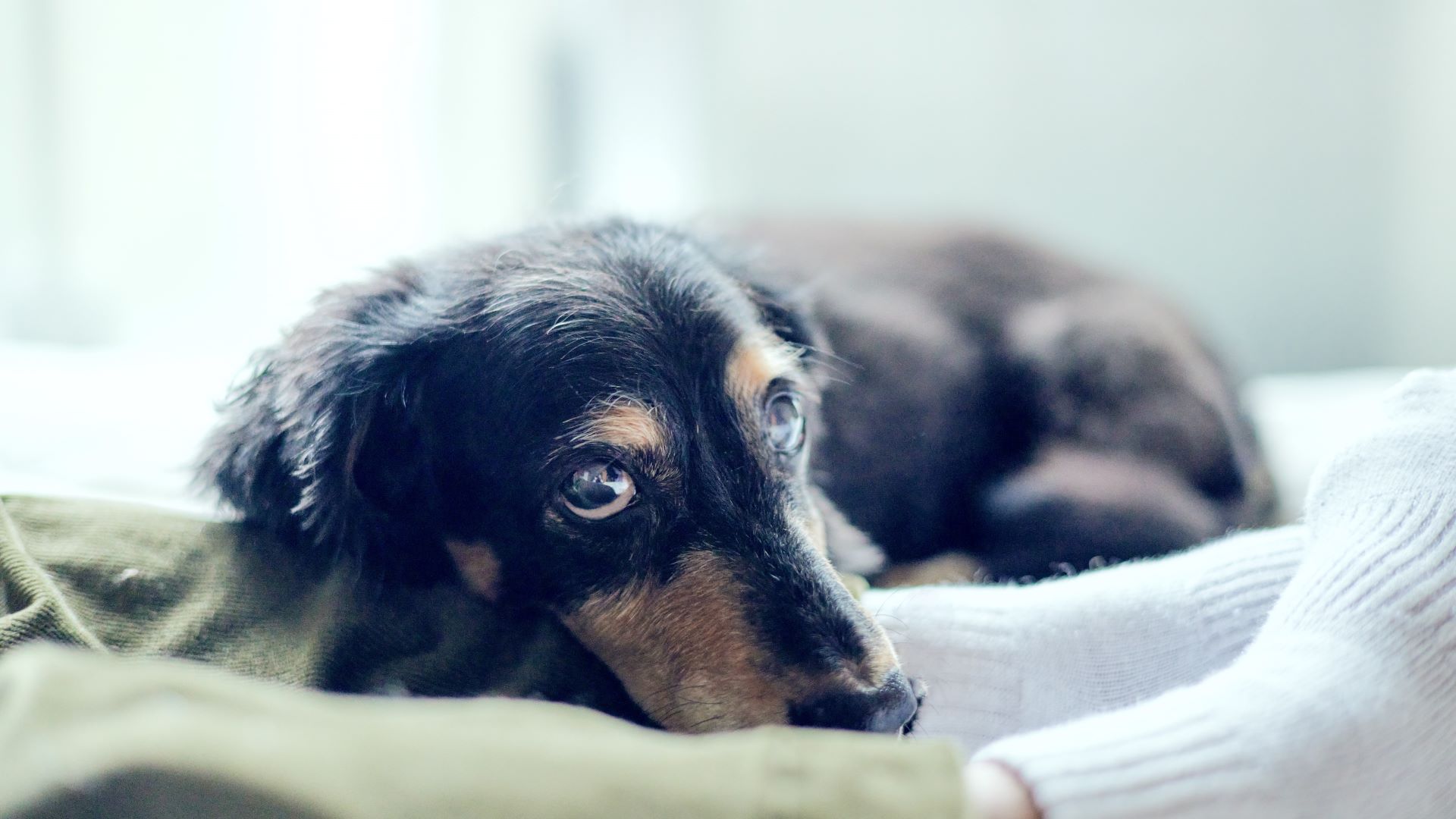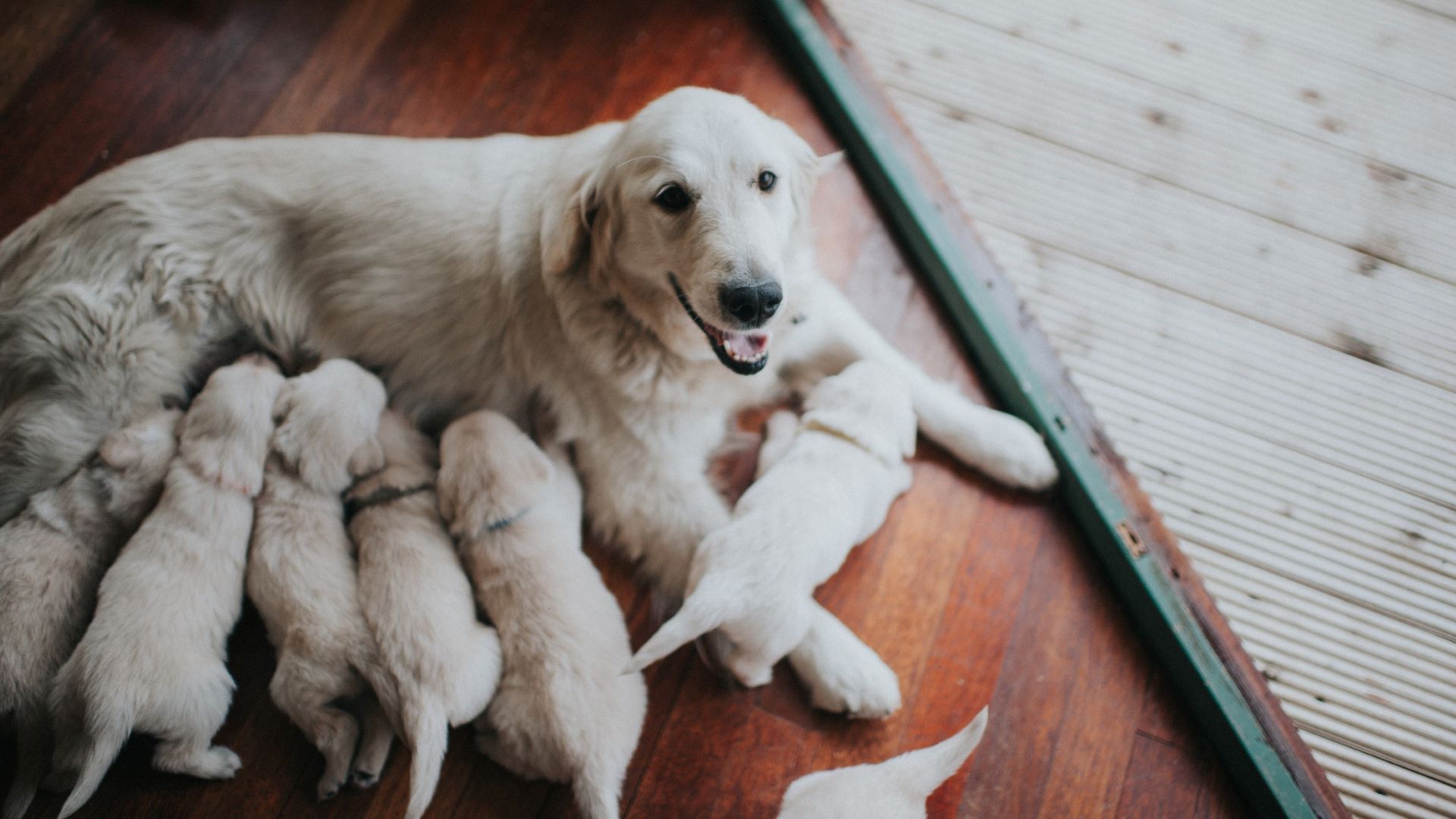How long does a dog stay in heat?
Wondering how long does a dog stay in heat? We reveal all

If you have a female dog, who hasn’t been spayed you may well be wondering how long does a dog stay in heat. Lifestyle changes, such as keeping your dog on lead during heat and walking in low-traffic areas, can be good to plan for - so knowing how long your dog will stay in heat is useful.
Your dog could actually be experiencing the estrus cycle before you even notice any of these five signs your dog is in heat. If you can, keep watching for the first signs of swelling of their vulva or discharge to get a clearer idea of the starting date.
Alongside physical signs that your dog is in heat, behaviourally they may have a loss of appetite during their cycle, even turning down the best dog treats. As a heat cycle can go on for a number of weeks, it’s important to get your dog checked by the vets if they don’t eat anything in 48 hours.
So, just how long can you expect your dog to stay in heat? Read on to discover more about your dog’s heat cycle.

Caroline Wilkinson is a Certified Animal Behaviourist. She is a Full (assessed) Member of the APDT and INTODogs – as well as a Registered Training Instructor (ABTC). Caroline is also a Certified Real Dog Yoga Practitioner and an Applied Canine Zoopharmacognosist.
How long does a dog stay in heat?
Female dogs who have not been spayed will experience heat cycles, also known as estrus or the reproductive cycle. During this period, the female dog in question is capable of becoming pregnant - if this is a concern of yours you can read our vet’s guide on how to tell if a dog is pregnant. Bitches start experiencing this cycle when they reach sexual maturity - this can be as young as a few months old or can occur later on up until even two years of age, depending on the breed of the dog and the individual themselves.
The heat cycle comprises four stages: proestrus, estrus, diestrus, and anestrus.
Proestrus is the first stage, lasting around seven-10 days. It is characterized by a swollen vulva and bloody discharge. According to the MSD Veterinary Manual, during this phase “Females attract males but will not allow mounting”.
Get the best advice, tips and top tech for your beloved Pets
Estrus is the period where the female is both receptive to males and able to get pregnant. Estrus lasts around five-10 days during which ovulation occurs, usually around two to three days after mating according to the Veterinary Manual. During this period, females may exhibit behavior changes - more barking and urination, alongside a desire to access male dogs.
The third stage, diestrus, brings change whether the dog has become pregnant or not. If the dog is pregnant, this stage lasts until the pups are born. If not, then you will see the vulva returning to its usual size and the desire for male dogs decreasing. During this stage, the reproductive system prepares for another cycle.
The fourth and final stage, anestrus, is a period of rest for the reproductive system until the next heat cycle begins which is usually around six months later.
The duration of the main fertile part of the heat cycle varies depending on the breed and the individual dog. It can last anywhere from two to three weeks. During this time, it’s important to keep your female dog away from male dogs unless mating is desired.
How do I know when my dog has finished her heat?
As a pet guardian, it’s important to understand when your dog’s cycle is complete so that you can go back to allowing them time off the leash or interacting with other dogs. While the length of a dog’s cycle can vary, the signs that it is coming to an end are usually consistent.
Watch out for your dog’s vulva returning to its normal size and any bleeding or discharge disappearing. Your dog’s behavior should also return to normal - less frequent urination, reduced desire for male dogs, and a return to their usual hunger and energy levels.
It’s worth remaining vigilant in terms of your dog’s interactions with male dogs for at least a week after you see all signs of heat have disappeared.

Are dogs in heat in pain?
While we aren’t completely sure if dogs experience discomfort during heat, it is generally agreed that they aren’t in large amounts of pain. However, there are a lot of changes being experienced by a dog in heat which can impact them beyond pain.
Physically they may feel uncomfortable due to an increased need to urinate and desire to keep clean. You may see your dog licking themselves more frequently - if so, be sure to check for other causes behind this as excessive licking in dogs can mean more than one thing.
Hormonal changes can cause anxiety in dogs and bring on feelings of stress. They may experience lethargy and a loss of appetite as well - here are 11 things to check when your dog is not eating. These symptoms are all usually short-lived and your dog will return to normal once their cycle is complete.

Can a dog get pregnant while bleeding in heat?
It is a common misconception that a dog cannot get pregnant during the bleeding stage of a heat cycle. Pet parents may think of the bleeding stage as similar to menstruation in women, which happens when fertilization of an egg has not occurred. In dogs, however, the bleeding stage occurs at the start of the cycle and throughout the fertile days.
It’s important to take necessary precautions and ensure your dog is properly supervised around other dogs - or avoid them altogether - to ensure unwanted pregnancies do not occur during the bleeding phase of a heat cycle.

Should you let a female dog go into heat before spaying?
If you have decided to spay your female dog earlier on in their life, you may be questioning whether or not to allow them to go into heat before the neutering occurs. As with the entire conversation around whether or not to neuter your dog at all, the best time to neuter your female dog is also up for debate.
Allowing your dog to have one heat cycle (or more) may provide them a longer period of time to develop both physically and emotionally without the impact neutering has on natural hormone production.
One study found that “Neutered dogs were more aggressive, fearful, excitable, and less trainable than intact dogs”. However, it is thought that spaying later in a female dog’s life has less impact on behavior - that those dogs that are neutered earlier are more likely to have behavioral issues. It’s also worthwhile noting that behaviorial problems can be a result of a whole host of problems, you will find our vet’s guide on how to deal with a badly behaved dog helpful if you’re struggling to control your canine.
Early spaying brings the physical benefits of reduced chance of mammary tumors. However, spaying too early can have an impact on a dog’s physical growth. As documented by another study, “Bitches spayed at seven weeks had significantly delayed closure of growth plates as compared to those spayed at seven months, and those spayed at seven months had significantly delayed closure of growth plates as compared to those left intact”.
It is important to note that there is currently no definitive answer as to whether neutering at all, or early / late neutering, is the right choice for every single dog. Discussing the individual merits or potential fallouts for your own dog with your veterinarian and behaviorist is the best way to determine whether or not to let your dog go into heat before spaying.

Caroline Wilkinson is a Certified Animal Behaviorist. She is a Full (assessed) Member of the Association of Professional Dog Trainersand INTODogs – as well as a Registered Training Instructor (ABTC). Caroline is also a Certified Real Dog Yoga Practitioner and an Applied Canine Zoopharmacognosist.
As the founder of digital pet coaching service Barket Place, Caroline has a passion for improving connections between human and hound, with a focus on relationships and reduction of stress for canines living in a human world. She helps pet parents, like you, to work through challenges they may be experiencing with their dog's behavior, so that they can get back to the important job of loving their dog.
Caroline writes for Edition Dog Magazine, as well as a number of trusted pet brands. She also speaks around the country – presenting workshops and webinars with a focus on living more mindfully alongside our canine companions. She is also the co-host of chart-topping podcast, ‘Supporting Both Ends of the Lead’ and has spoken about dangerous dogs on BBC Points West and BBC Radio Bristol.
